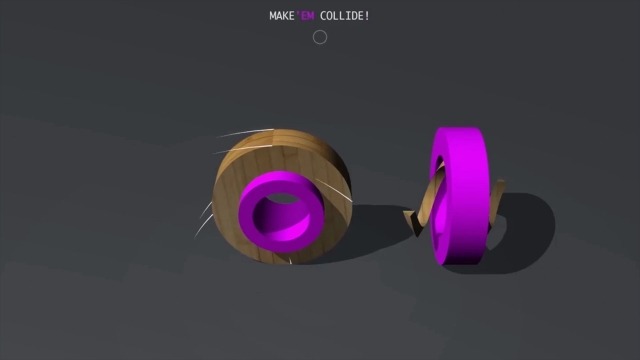Your phone’s accelerometer can tell if you’re holding it in portrait or landscape mode. It can wait until you stop shaking to take a photo. It can even add some tilt sensitivity to games. But as ECAL student Marc Dubois shows us, that’s but the tip of the iceberg. Placed in the simplest of shapes–a sphere, a cone, and a cube–our iPhones can power tactile, 1:1 interfaces with computers.
What’s that mean? Place your phone into a sphere, and as you roll it, an identical sphere can roll at exactly the same speed onscreen. He performs the same trick with a cube, creating a blocky game of Pac-Man. And then, for the pièce de résistance, Dubois places phone into a cone, where its accelerometer goes quiet, but instead, the camera activates to sense the direction of light shining in at it. Neat, right?
These moments are thanks to some novel coding by Dubois, but truth be told, there’s no high-tech breakthrough happening here. It’s just clever thinking, examining how to unlock new interactions with the technologies we have today, just by changing the container housing the technology.
It teases all sorts of new control schemes that may be possible as more dumb devices become smart in the age of the Internet of Things. And I think it illustrates that, while gesture-tracking systems like the Leap Motion and Microsoft Kinect have failed to revolutionize our day-to-day lives just yet, the conversation around new interfaces is far from over. Because miming that you’re rolling a ball–as you might on Kinect–is entirely less natural than actually rolling a ball–as you would in the video here. Through this simple hack, Dubois has done something impressive: He’s created a 3-D interface that you can touch.
via fastcodesign.com



